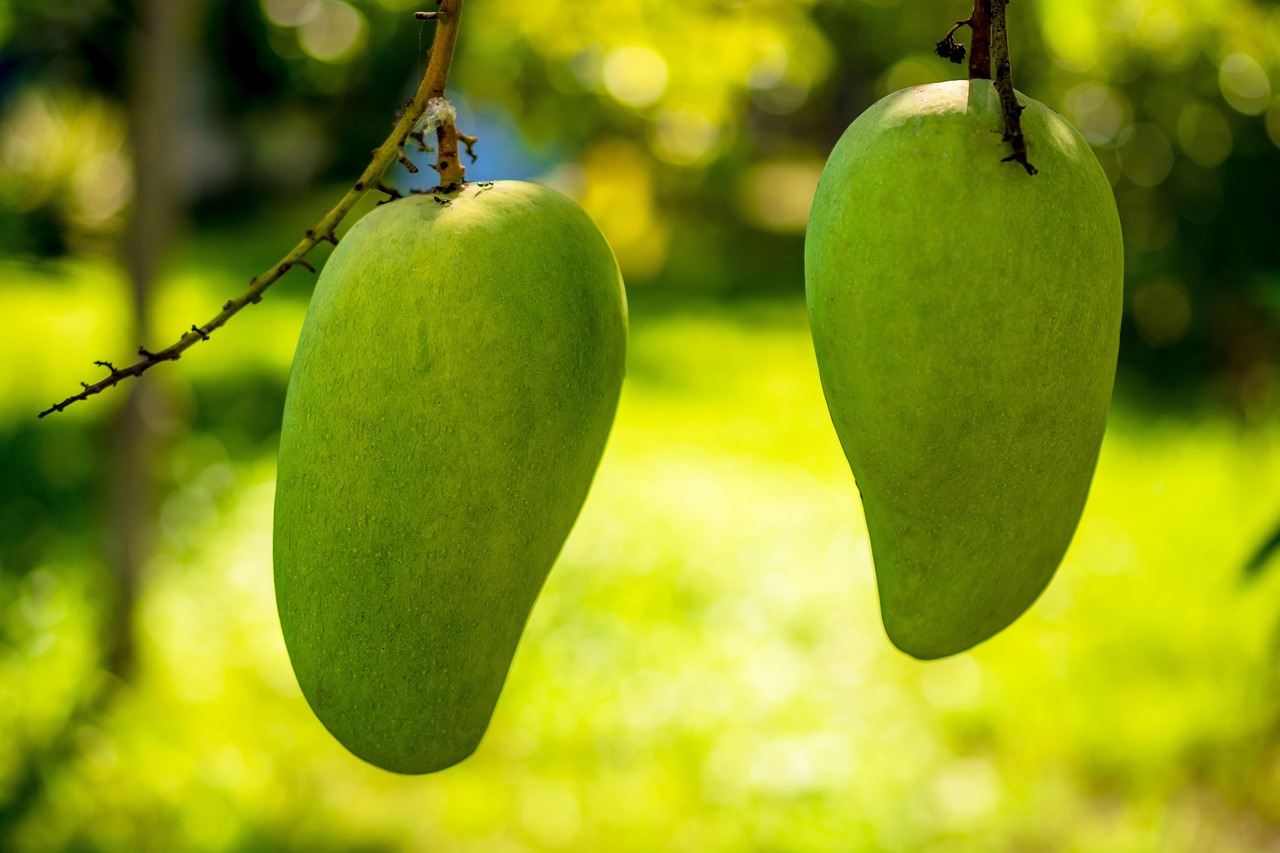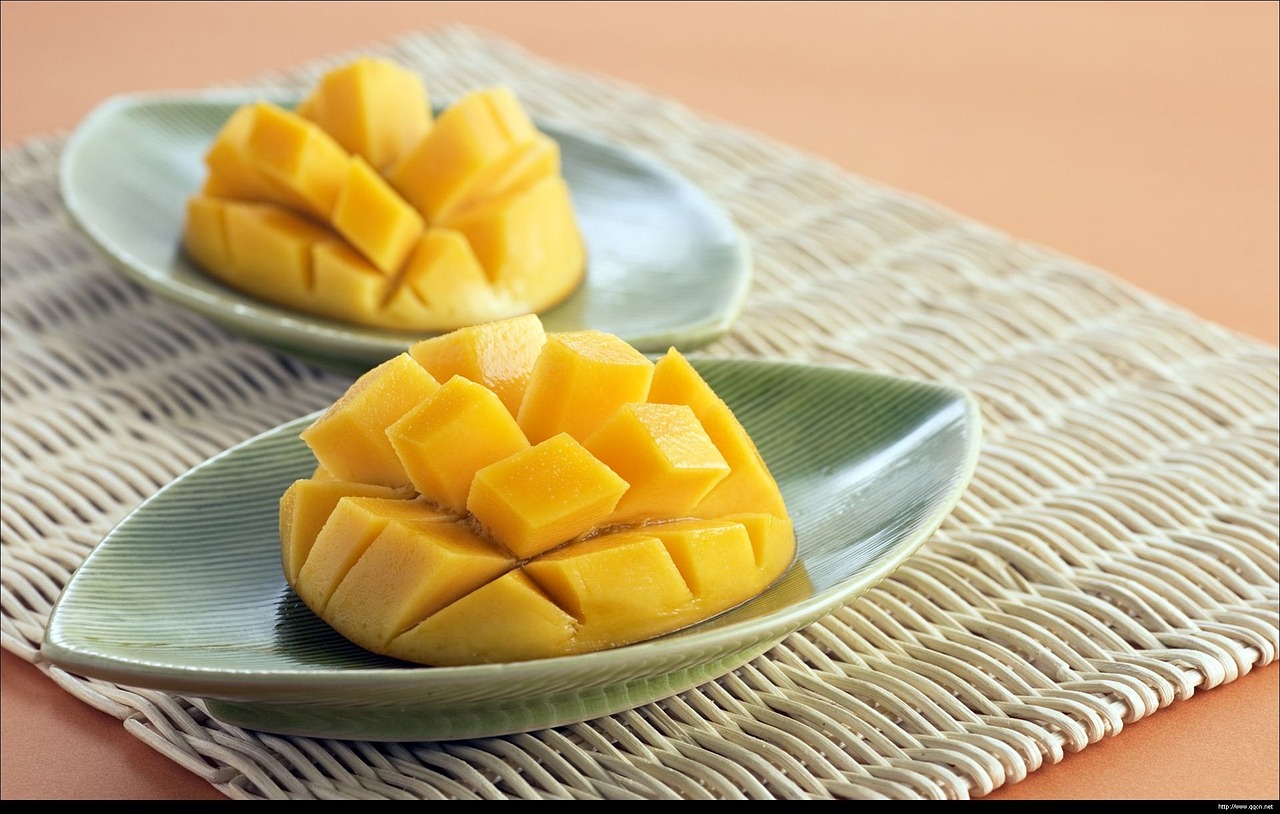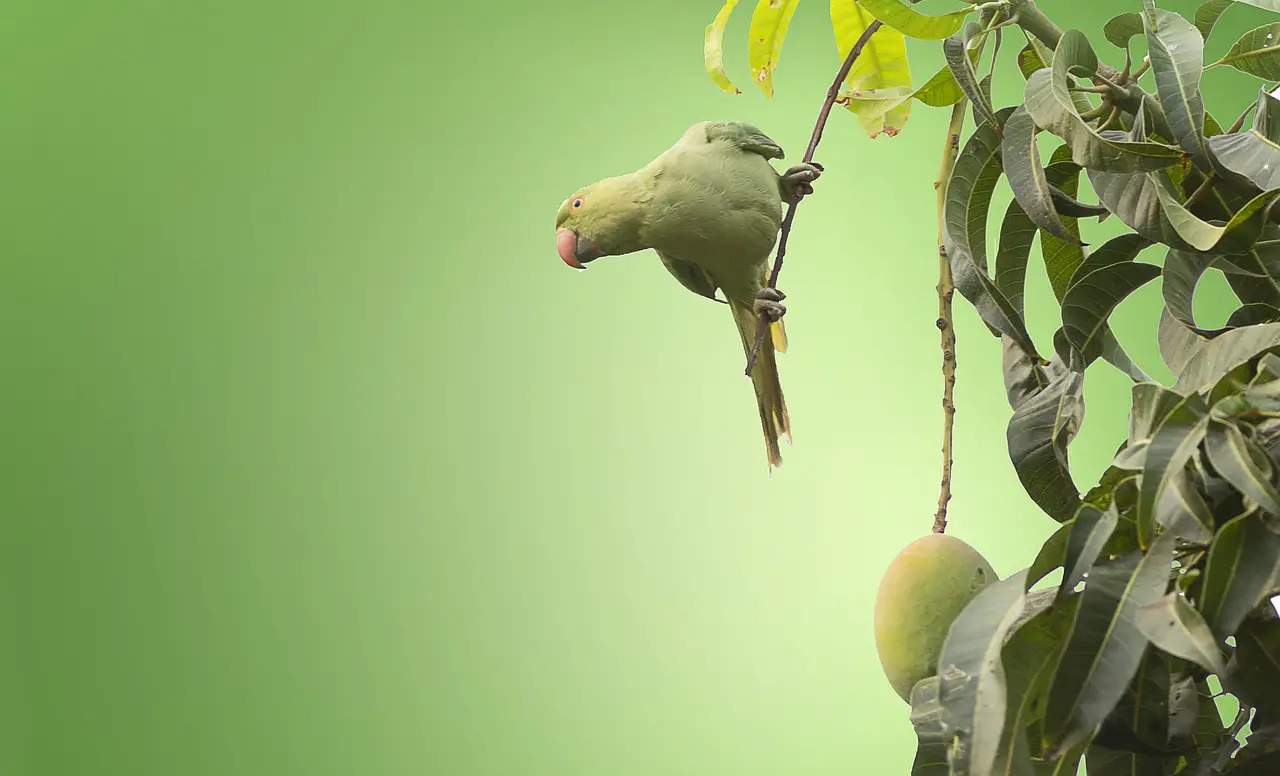Pruning mango trees effectively can lead to larger fruit size by improving sunlight penetration, enhancing air circulation, and reducing competition among fruits. Proper techniques and timing are essential for achieving the best results.
Mango trees are beloved for their sweet, juicy fruits. However, many gardeners find that their mangoes do not reach the desired size or quality. One of the most effective ways to enhance fruit size is through proper pruning. Pruning involves selectively removing specific branches or foliage to promote healthier growth and improve fruit production. This practice not only influences the size of the mangoes but also their taste and overall quality.

Understanding the right techniques and timing for pruning mango trees is vital. Mango trees can grow tall and bushy, which can hinder sunlight from reaching all parts of the tree. This lack of light can lead to smaller fruits and poor-quality yields. By pruning, you can create a more open structure that allows sunlight to penetrate deep into the foliage, ensuring that all developing fruits receive adequate light.
Benefits of Pruning Mango Trees
Pruning mango trees offers several benefits that contribute to larger fruit size and better overall tree health. Here are some key advantages:
- Improved Air Circulation: Pruning helps in reducing overcrowding of branches, allowing air to flow freely through the tree. This can help prevent fungal diseases that thrive in stagnant air.
- Enhanced Sunlight Exposure: By removing excess branches, more sunlight can reach the inner parts of the tree. Sunlight is crucial for photosynthesis, which directly affects fruit development.
- Better Fruit Quality: When trees are pruned properly, they can allocate more energy to fewer fruits, resulting in larger and tastier mangoes.
- Stronger Structure: Regular pruning helps develop a strong framework for the tree, making it more resilient to wind and storms.
Furthermore, pruning can stimulate new growth. When you prune a mango tree, it encourages the production of new shoots. These new shoots are often more productive and can lead to a more abundant harvest in subsequent seasons.

When to Prune Mango Trees
The timing of pruning is critical for success. Pruning at the wrong time can harm the tree or reduce fruit yield. The best time to prune mango trees is shortly after harvesting the fruit. This timing allows the tree to recover before the next growing season begins.
In warmer climates, this typically means pruning during late summer or early fall. For regions with cooler winters, late winter to early spring may be more appropriate. It’s important to avoid pruning during periods of active growth since this can stress the tree.
Pruning Techniques for Larger Mangoes
There are several techniques employed when pruning mango trees. Each technique has its unique benefits and should be used based on the tree’s specific needs:

- Thinning: This involves removing selected branches to reduce competition among fruits and allow for better light penetration.
- Heading Back: Cutting back branches to a bud or lateral branch encourages new growth, which can improve fruit size.
- Shaping: Regularly shaping the tree helps maintain a desirable form and ensures that all areas of the tree receive adequate light.
Pest and Disease Management
When pruning mango trees, it is important to also consider pest and disease management. Healthy trees are better able to resist pests and diseases. Pruning out diseased or infested branches can prevent the spread of issues throughout the tree.
You may also want to apply protective measures post-pruning. Using organic fungicides or insecticides can help safeguard the cuts made during pruning, ensuring that your tree remains healthy as it recovers.
| Pest/Disease | Symptoms | Control Method |
|---|---|---|
| Mango Leaf Curl | Curling leaves, stunted growth | Remove affected leaves, apply insecticidal soap |
| Mango Weevil | Boring holes in fruit, poor fruit quality | Apply neem oil, remove infested fruit |
| Anthracnose | Dark spots on leaves and fruit | Fungicide application, improve airflow |
In conclusion, understanding how to effectively prune mango trees can significantly impact fruit size and quality. By implementing proper techniques at the right time, growers can enjoy a bountiful harvest of larger, sweeter mangoes.
Tools and Equipment for Pruning Mango Trees
Having the right tools is essential for effective pruning of mango trees. The proper equipment ensures that cuts are clean and precise, which is vital for the tree’s recovery and health. Below are some common tools used in the pruning process:

- Pruning Shears: These are ideal for cutting small branches and foliage. They provide a clean cut and reduce the risk of damaging the tree.
- Loppers: For thicker branches, loppers offer greater leverage, making it easier to cut through wood that is too thick for pruning shears.
- Saws: A hand saw or pole saw may be necessary for larger branches that cannot be cut with shears or loppers.
- Gloves: Protect your hands while working, especially when dealing with thorny branches or rough bark.
- Safety Goggles: These protect your eyes from falling debris during the pruning process.
Before starting the pruning process, ensure that all tools are clean and sharp. This helps prevent infections and allows for more efficient cutting. Regular maintenance of tools is crucial for maximizing their lifespan and performance.
Understanding Growth Patterns of Mango Trees
To effectively prune mango trees, it’s essential to understand their growth patterns. Mango trees exhibit two types of growth: vegetative and reproductive. Recognizing these growth stages can significantly influence your pruning strategy.
Vegetative Growth
During the vegetative growth stage, mango trees focus on producing leaves and branches. This stage is crucial for establishing a healthy structure. Proper pruning at this stage can help shape the tree and promote an open canopy.
Reproductive Growth
The reproductive growth stage follows vegetative growth and is characterized by flower and fruit production. Pruning during or just after this stage can help manage the number of fruits that develop, ensuring that the tree allocates resources effectively to grow larger fruits.
Common Mistakes to Avoid When Pruning
While pruning can greatly enhance mango tree health and fruit size, several common mistakes can hinder progress. Awareness of these pitfalls can help you avoid them:
- Pruning Too Much: Over-pruning can stress the tree and reduce fruit yield. Always aim for a balanced approach.
- Ignoring Tree Shape: Failing to maintain the natural shape of the tree can lead to poor light distribution and air circulation.
- Timing Issues: Pruning at the wrong time can lead to damaged branches or reduced fruit production. Stick to the recommended timing based on your climate.
- Neglecting Clean Tools: Using dirty or dull tools can introduce diseases or cause unnecessary damage to the tree.
Seasonal Care after Pruning
After pruning, providing proper care throughout the seasons is crucial for recovery and growth. Here are some key practices to follow:
Watering
Post-pruning, ensure that your mango tree receives adequate water. However, avoid overwatering, as this can lead to root rot. Water deeply when needed, allowing the soil to dry out between watering sessions.
Nutrient Management
A balanced fertilizer can support recovery and promote healthy growth after pruning. Look for fertilizers high in phosphorus, as this nutrient promotes flowering and fruiting.
Monitoring for Pests and Diseases
Keep a close eye on your mango tree for any signs of pests or diseases after pruning. Early detection is vital for effective management. Consider using organic pesticides if necessary, ensuring they are suitable for fruit-bearing trees.
Case Studies: Successful Pruning Practices
Various case studies highlight successful pruning practices that have led to increased fruit size in mango trees. Here are a couple of examples:
| Location | Practice | Results |
|---|---|---|
| Florida | Thinning branches in late summer | Larger fruit size by 20% on average |
| Mexico | Heading back after harvest | Increased overall yield; improved fruit taste |
These case studies emphasize the importance of tailoring pruning practices to specific local conditions and tree health needs. By learning from others’ experiences, growers can refine their own techniques for better results.
Incorporating effective pruning strategies into your mango tree care routine will enhance not only fruit size but also overall tree vitality. Understanding growth patterns, avoiding common mistakes, and following up with proper seasonal care will contribute significantly to a bountiful harvest of delicious mangoes.
Advanced Pruning Techniques for Mango Trees
As you become more experienced in pruning mango trees, you may want to explore advanced techniques that can further enhance fruit size and quality. These methods often require a deeper understanding of tree biology and growth patterns but can yield impressive results when done correctly.
Selective Pruning
Selective pruning involves targeting specific branches or areas of the tree to remove, rather than performing a general prune. This technique focuses on enhancing light exposure and airflow while minimizing stress on the tree.
- Identify Weak Branches: Look for branches that are weak or damaged. Removing these allows the tree to redirect its energy toward stronger branches.
- Focus on Fruit-Bearing Branches: Prioritize pruning on branches where fruit is expected to develop. This helps ensure that these branches receive enough light and nutrients.
- Maintain Balance: Selectively prune to keep the balance of the tree intact. Over-pruning one side can lead to uneven growth and structural issues.
Espalier Pruning
Espalier is a technique that involves training the mango tree to grow flat against a support structure, such as a trellis or wall. This method maximizes sunlight exposure and can lead to larger fruit by allowing better air circulation and light penetration.
To effectively espalier a mango tree, follow these steps:
- Choose a young mango tree and a suitable support structure.
- During the first few years, prune the tree to encourage lateral growth while maintaining a central leader.
- As the tree matures, tie down branches to the support structure, pruning any competing growth to maintain the desired shape.
- Regularly check and adjust ties as the tree grows, ensuring that branches remain horizontal and evenly spaced.
Understanding Mango Tree Varieties
Different mango varieties may respond differently to pruning. Understanding these variations can help tailor your approach for optimal results. Here are some popular mango varieties and their characteristics:
| Mango Variety | Characteristics | Best Pruning Practices |
|---|---|---|
| Haden | Rich flavor, medium to large size, vibrant color | Thinning after fruit set; aim for open canopy |
| Tommy Atkins | Sweet, fibrous, large fruit with a long shelf life | Regular shaping; emphasize air circulation |
| Kent | Sweet, juicy, low fiber, medium to large size | Encourage new growth; focus on fruiting branches |
| Palmer | Smooth skin, sweet flavor, medium size | Regular thinning; maintain balance in growth |
The Role of Climate in Pruning Strategies
The climate in which your mango trees grow plays a significant role in determining the best pruning practices. Different climates can affect growth rates, fruit size, and overall tree health.
Tropical Climates
In tropical regions, mango trees thrive year-round, leading to more consistent growth patterns. Here are some tips for pruning in tropical climates:
- Prune After Harvest: Focus on pruning right after the harvesting season to prepare the tree for the next growth cycle.
- Avoid Heavy Pruning: Since trees grow continuously, heavy pruning can stress them. Focus on light pruning techniques.
Subtropical Climates
Mango trees in subtropical climates may experience cooler winters that can affect their growth cycles. Here are some strategies for managing pruning in these conditions:
- Winter Pruning: Consider light pruning during late winter to encourage new growth in spring.
- Timing is Key: Monitor weather patterns closely and avoid pruning during periods of frost risk.
Pest Management Post-Pruning
After pruning, it is essential to implement pest management strategies to protect your mango trees from potential infestations. Pruned areas can attract pests if not properly managed. Here are some effective methods:
- Use Organic Pesticides: Apply organic options like neem oil or insecticidal soap to deter pests without harming beneficial insects.
- Introduce Beneficial Insects: Encourage natural predators such as ladybugs and lacewings to control pest populations.
- Regular Monitoring: Check your trees frequently for signs of pest activity and take action immediately if needed.
By combining advanced pruning techniques with an understanding of mango varieties and climate considerations, you can significantly enhance the quality and size of your mango fruit. Implementing effective pest management post-pruning will further ensure healthy growth and a bountiful harvest.
Long-Term Care for Mango Trees
To ensure that mango trees produce large, quality fruits year after year, long-term care is essential. This involves not only pruning and pest management but also a comprehensive approach that includes proper nutrition, irrigation, and disease prevention strategies.
Nutrient Management
Providing the right nutrients is crucial for the overall health and productivity of mango trees. Regular soil testing can help determine nutrient levels and guide fertilization practices. Here are some key nutrients to focus on:
- Nitrogen: Promotes leaf and stem growth, which is essential during the vegetative stage.
- Phosphorus: Important for flowering and fruit development. A high-phosphorus fertilizer can lead to larger mangoes.
- Potassium: Enhances fruit size and quality while improving the tree’s resistance to diseases.
Generally, a balanced fertilizer that includes all three macronutrients is recommended. Additionally, organic amendments such as compost can improve soil structure and provide a slow-release source of nutrients.
Irrigation Practices
Water management is another critical aspect of mango tree care. Proper irrigation helps reduce stress during dry periods, allowing trees to maintain healthy growth and fruit size. Here are some essential irrigation practices:
- Drip Irrigation: This method delivers water directly to the root zone, minimizing water waste and ensuring that trees receive adequate moisture.
- Timing: Watering should be done early in the morning or late in the evening to reduce evaporation losses.
- Soil Moisture Monitoring: Regularly check soil moisture levels to avoid overwatering or underwatering, both of which can adversely affect fruit production.
Disease Prevention Strategies
Mango trees are susceptible to various diseases that can impact fruit size and overall health. Preventative measures can significantly reduce the risk of disease outbreaks. Consider the following strategies:
- Regular Inspections: Monitor trees for any signs of disease, such as leaf spots or wilting. Early detection is key to effective management.
- Pruning for Airflow: Maintain an open canopy to improve air circulation, which helps reduce humidity around the tree and minimizes the risk of fungal infections.
- Fungicide Applications: When necessary, apply organic fungicides to protect against specific diseases, especially during wet weather conditions.
Integrating Technology in Mango Tree Management
Modern technology can also play a significant role in enhancing mango tree care. From soil monitoring systems to mobile apps for tracking growth and pest activity, leveraging technology can improve decision-making processes for growers.
- Soil Sensors: These devices measure moisture levels, temperature, and nutrient content, providing real-time data that helps optimize irrigation and fertilization schedules.
- Drones: Drones equipped with cameras can provide aerial views of orchards, helping identify areas that require attention or additional care.
- Pest Tracking Apps: Mobile applications can assist growers in monitoring pest populations and diseases, offering timely advice for management practices.
Final Thoughts
Pruning mango trees for larger fruit size is a multifaceted process that requires knowledge of tree biology, proper techniques, and ongoing care. By understanding the specific needs of mango trees throughout their growth cycle—from pruning to nutrient management—growers can significantly enhance fruit quality and yield.
The integration of advanced pruning techniques, proper pest management strategies, and long-term care practices will ensure that mango trees thrive. Utilizing technology in monitoring and managing these trees can further enhance productivity and ease the workload involved in maintenance.
Ultimately, successful mango cultivation is a combination of science and art. With patience, dedication, and the right approach, anyone can enjoy a fruitful harvest of delicious mangoes that are both large and flavorful. The journey from pruning to harvest is rewarding and worth every effort invested in caring for these exceptional trees.
